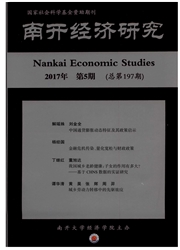

 中文摘要:
中文摘要:
资产定价理论试图寻求金融资产预期收益的决定因素。经典资产定价理论预测资产预期收益与系统市场风险正相关,然而研究者在模型检验中,多使用已实现收益作为预期收益的替代变量,而已实现收益由于噪音、信息冲击等问题,可能不是预期收益的良好替代,有鉴于此,现有研究转向“事前法”,从投资者视角看待预期收益问题,使用隐含资本成本方法替代预期收益。结合公司财务和会计方面对预期收益进行度量则是隐含资本成本方法的核心,根据这一研究脉络,文章全面阐述了隐含资本成本方法及其研究新进展,并提出了未来研究方向。
 英文摘要:
英文摘要:
Asset pricing models seek to establish the determinants of financial assets'expected rates of return. Classic asset pricing models predict that an asset's expected return should be positively related to its systematic market risk. However, researchers have to use realized return as a proxy for expected return in tests of these models. Realized return may be not a good proxy for expected return because noise in realized returns is likely to be large and information surprises do not cancel out over the period of study. Now, researchers turn to an ex ante approach from the shareholders' point of view, and use the implied cost of capital as a measure of expected return on equity. The measurement of expected return combined with corporate finance and accounting is the core of this methods. According to the research context, this paper describes the development of the methods thoroughly and provides the research direction in the future.
 同期刊论文项目
同期刊论文项目
 同项目期刊论文
同项目期刊论文
 期刊信息
期刊信息
